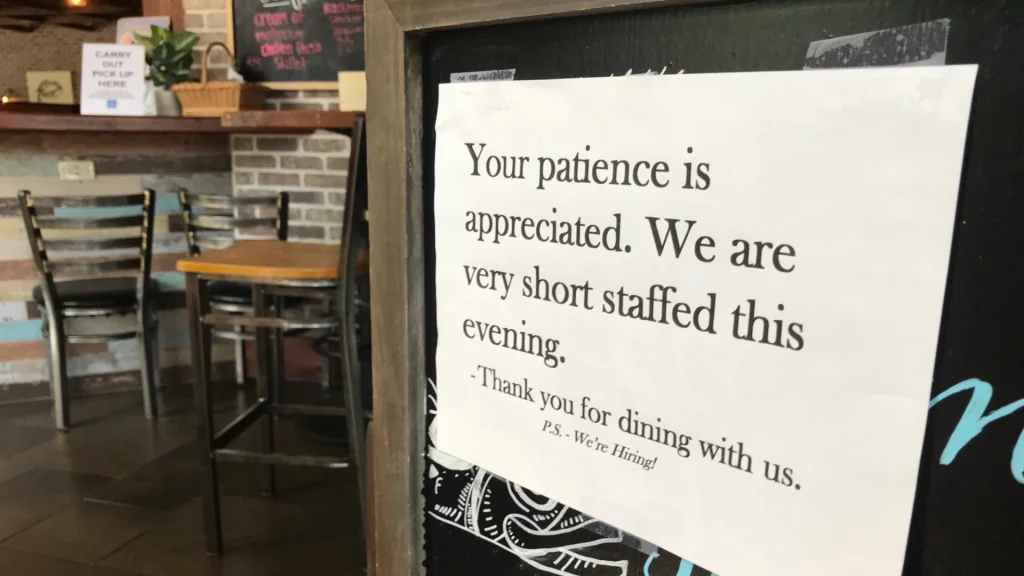The Great Resignation marks an epic shift in the history of the labor market, and business owners are scrambling. After decades of stagnation with U.S. wage growth, plus a pandemic that transformed personal perspectives, workers are in no hurry to return to jobs they find unsatisfying.
And no, this labor crunch isn’t just because of the cushion of unemployment benefits (if at all). Even in states where unemployment benefits were halted early, workers have remained choosy and slow to return.
Quite simply, the power dynamic has shifted from employers to employees, and many business owners feel stuck. Especially if they employ lower-wage workers in businesses with thin margins and can’t afford to throw money at the problem.
But money alone isn’t the answer to this problem anyway.
Sure, financial incentives can sometimes help entice and keep workers. But raises and bonuses aren’t the holy grail to retaining workers. Because above all, workers want to feel a connection with their workplaces.
How can you build this connection?
For starters, consider basic pathways to improve the lives of your workers. There are plenty of opportunities you might not be tapping to distinguish your workplace as staff-centered and thereby attract and retain employees. Some of these pathways are literally life-changing for lower-wage workers.
The hiring and retention stats are not in your favor; it’s time to get creative
First, the facts: It’s understandable that many business owners are feeling resigned to the Great Resignation. The reality is daunting:
- Nearly 4.3 million people quit their jobs in August, putting the national quit rate at 2.9%, a new record.
- A recent report from ResumeBuilder.com found that 15% of American workers plan to quit their jobs before the end of the year.
- Other research shows that 41% of the global workforce is thinking about quitting.
- Employers are currently struggling to fill a record 9.2 million job openings.
Never mind stats, the labor crunch can be seen everywhere, with understaffed services, shuttered shops, and signs like these:

For businesses employing lower-paid and part-time employees, the Great Resignation is particularly challenging.
Workers are tired of scraping by at jobs that don’t sufficiently reward them; today, only 7% of all U.S. counties are affordable for a full-time minimum-wage worker who wants to rent a one-bedroom home. Workers on the frontlines of industries like leisure and hospitality are especially burnt out and fed up, which explains why more than 740,000 of those workers quit in April.
What’s a small business owner (or any employer of lower-wage workers) to do?
Be the opposite of toxic
Step 1: Don’t be toxic.
Seriously. We’ve all had a long pandemic to mull over what’s important and realize that life is far too short. Your workers need to feel like you have a heart and that you’re making their lives better.
One of the best ways to change hearts, minds, and lives is to help your employees feel cared for.
Literally.
Health insurance is one of the most important drivers of security for low-income families. And even on minuscule budgets, small businesses have opportunities to make the benefits that they provide go further.
What can this look like?
One approach is to ditch the cheap insurance you might be offering. Instead, help qualified employees enroll in public benefits and supplement this with inexpensive but high-end benefits.
Workers and businesses benefit from low-cost benefits
While there are programs in place to help qualifying individuals and family members access public health coverage, workers often don’t know how to navigate the red tape of the enrollment process.
Some people are hesitant to engage with government services. Some people aren’t aware that they qualify. Others just don’t know where to start.
Acting as a facilitator to help your employees access public benefits is a win-win. Your employees gain health insurance coverage at no cost to you. Your business reaps the rewards of their appreciation. Your workers are healthier, happier, and more likely to stay.
Beyond helping to connect your workers with health coverage, your business can provide access to other affordable benefits. Many companies out there provide inexpensive care services to lower-wage workers. You just need to know where to look and how to package these benefits in a cost-effective way for your business.
At little expense to your business, you can help your workers access services like:
- Vision and dental care
- Telemedicine
- Legal services
- Advocacy to ensure that health coverage is being fulfilled
- And other aspects of life care that help workers feel valued and secure

Walking the talk of caring about your workers is the new cost of doing business
Ultimately, your business needs to rethink its relationship with employees in order to be successful at attracting and retaining them.
If your business is tight on cash, you may be (understandably) hesitant to spend more on your employees. But the cost of churning through staff far exceeds modest investments in helping your workers access public benefits and low-cost services.
Showing that you care is the new cost of doing business, and it’s suddenly non-negotiable. You can make a real difference for your workers and your bottom line by facilitating the benefits that are already out there waiting to be accessed by your staff.

